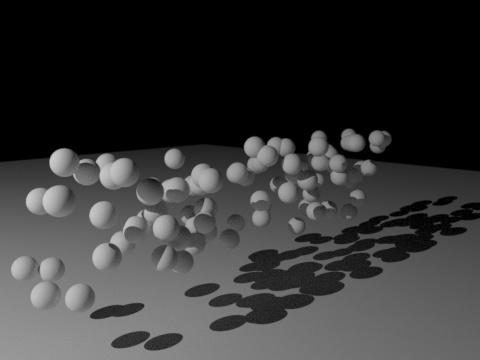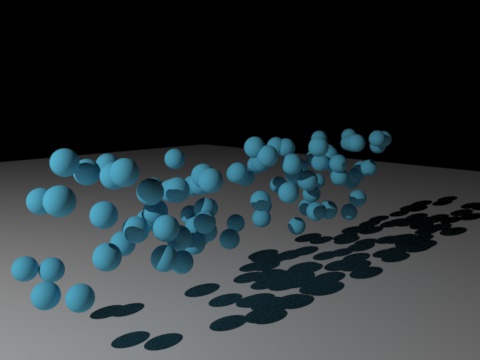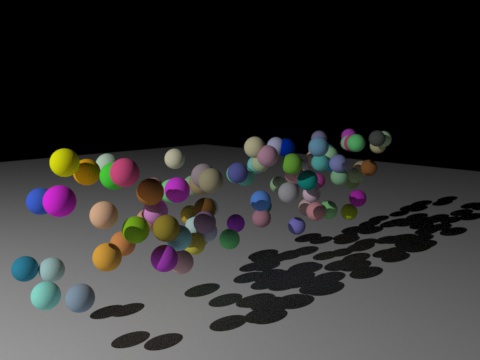X-Particles and Cycles 4D: Basic Particle Rendering
Rendering X-Particles without geometry is easy. You don't have to do anything, just add a cyInstance tag or an Object Material to the emitter and render. If you do that, then when rendering, you might see something like this:

Which is okay, but very plain. There is no geometry in this scene, what you see are the rendered particles, and note that it wasn't necessary to add a material to render them, as without one they will render plain white. That also means that the rendered particles do not pick up the particle colour. To do that, we need to add a material to them.
Note that the particles are rendered as a sphere if no geometry is being generated (see the 'Adding Geometry' page). The number of segments in the rendered sphere can be altered using the Instance tag.
Using materials
The great thing about Cycles 4D is that you can use any of the available nodes directly on the particles, no need to create any geometry. So reflective or translucent or glass particles are all possible. For rendering them as a plain colour, just as with any other object we apply an object material to the emitter. In the material all we need is a Diffuse BSDF node (in this case with its Color set to blue) like so:

Now, in many cases we would like the rendered particles to use the particles' own colour. We can easily get the colour from the Particle Info node. First we set the particle colour to random in the emitter. Then create an object material with a node tree like this:

The particles are now rendered with their own color:

In addition, you can combine nodes just as you would with other objects. So you can have particles with a mixed diffuse and glossy shader, for example:

Rendering X-Particles groups
You can also restrict a material to X-Particles groups. To render a specific group or groups, simply assign the material to the group object(s) instead of the emitter.
 Note that if you do this you should also remove the Object Material from the emitter, as otherwise the group and the emitter will both be rendered separately and you will end up with the two renders superimposed!
Note that if you do this you should also remove the Object Material from the emitter, as otherwise the group and the emitter will both be rendered separately and you will end up with the two renders superimposed!
Accessing additional data
So far this is fairly limited and for more power you need to access the data stored within each particle.